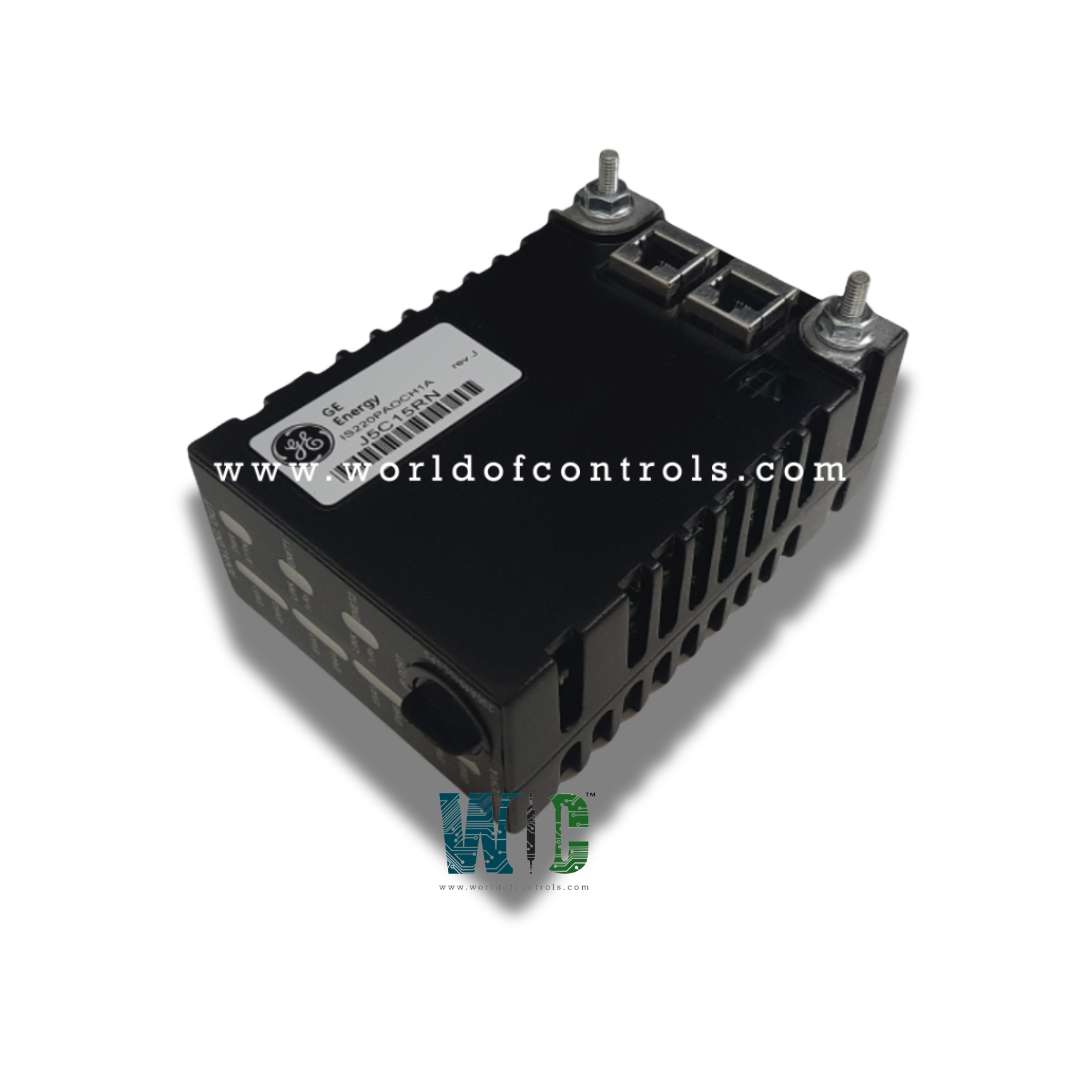
World Of Controls understands the criticality of your requirement and works towards reducing the lead time as much as possible.
IS220PDIAH1B REV B - Discrete Contact Input Terminal Board is available in stock which ships the same day.
IS220PDIAH1B REV B - Discrete Contact Input Terminal Board comes in UNUSED as well as REBUILT condition.
To avail our best deals for IS220PDIAH1B REV B - Discrete Contact Input Terminal Board, contact us and we will get back to you within 24 hours.
SPECIFICATIONS:
Part Number: IS220PDIAH1B REV B
Manufacturer: General Electric
Product Type: Discrete Contact Input Terminal Board
Function: I/O Module
Series: Mark VIe
Number of channels: 24
Operating temperature: -40 to +70°C
Size: 15.9 cm high x 17.8 cm
Input isolation in pack: Optical isolation to 1500 V on all inputs
Input Filter: Hardware Filter, 4 ms
AC Voltage Rejection: 60 V rms at 50/60 Hz at 125 V dc excitation
Availability: In Stock
Weight: 0.8kg
Repair: 3-7 Day
Country of Origin: USA
Manual: GEH-6721D
FUNCTIONAL DESCRIPTION:
IS220PDIAH1B REV B is a Discrete Contact Input Terminal Board manufactured and designed by General Electric as part of the Mark VIe Series used in GE Distributed Turbine Control Systems. The PDIA I/O pack provides the electrical interface between one or two I/O Ethernet networks and a discrete input terminal board. The pack contains a processor board common to all Mark VIe distributed I/O packs and an acquisition board specific to the discrete input function. The pack accepts up to 24 contact inputs and terminal board-specific feedback signals, PDIA accepts three different voltage levels (with types TBCIH1, H2, and H3 terminal boards). Connections for the isolated discrete input board with voltage sensing (with type TICI board) are available. System input to the pack is through dual RJ45 Ethernet connectors and a three-pin power input. Discrete signal input is through a DC-37 pin connector that connects directly with the associated terminal board connector. Visual diagnostics are provided through indicator LEDs, and local diagnostic serial communications are possible through an infrared port.
COMPATIBILITY:
PDIAH1A is compatible with five types of discrete contact input terminal boards, including the TBCI boards, TICI boards, STCI boards, but not the DIN-rail mounted DTCI board. The following table gives details of the compatibility:
INSTALLATION:
OPERATIONS:
The processor application code contains all the logic necessary to allow the pack to operate from one or two Ethernet inputs. When operated from two Ethernet inputs, both network paths are active all the time. A failure of either network will not result in any disturbance to the I/O pack operation, and the failure will be indicated through the working network connection. This arrangement is more tolerant of faults than a classic hot-backup system where the second port is only used after a primary port failure is detected. The Ethernet ports on the processor auto-negotiate between 10 MB/s and 100 MB/s speed, and between half-duplex and full-duplex operation.
INPUT SIGNALS:
The discrete input acquisition board provides the second stage of signal conditioning and level shifting to interface the terminal board inputs to the control logic. Initial signal conditioning is provided on the terminal board. The discrete input acquisition input circuit is a comparator with a variable threshold. Each input is isolated from the control logic through an opto-coupler and an isolated power supply. The inputs are not isolated from each other. Each of the twenty-four inputs has filtering, hysteresis, and a yellow status LED, that indicates when an input is picked up. The LED will be OFF when the input is dropped out.
WOC has the largest stock of GE Distributed Control System Replacement Parts. We can also supply unused and rebuilt backed-up with a warranty. Our team of experts is available round the clock to support your OEM needs. Our team of experts at WOC is happy to assist you with any of your automation requirements. For pricing and availability on any parts and repairs, kindly get in touch with our team by phone or email.
What is the input voltage range for the terminal board?
The input voltage range depends on the specific model, but most discrete contact input terminal boards operate at 24V DC. Some models may support a wider voltage range, such as 12V to 48V DC, to accommodate different field device requirements.
What type of isolation is provided between input channels?
The terminal board typically features optical or galvanic isolation to prevent electrical noise, ground loops, and potential damage to the control system. The isolation rating varies but is usually in the range of 1500V to 2500V.
What is the response time of the input channels?
The response time of discrete input channels varies based on the model and configuration but is typically in the range of 1 ms to 10 ms. High-speed input boards may offer faster response times for time-critical applications.
What is the maximum current per input channel?
The maximum current per channel depends on the specific model, but it typically ranges from 2mA to 10mA. Exceeding the rated current may lead to improper operation or damage to the input circuit